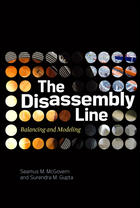
A satellite component undergoes force limited vibration testing with three-component force sensors used in the feedback control loop, which monitors input excitation force. Source: PCB Piezotronics Inc.
A major cause of overtesting of spacecraft, aerospace and flight hardware during random and swept sine vibration tests is associated with differences between the mechanical impedance of the shaker and mounting fixture, and the standard practice of controlling the input acceleration to the frequency envelope of the flight data. The result is artificially high shaker forces and responses at the resonance frequencies of the test item. These high forces can damage expensive payloads.
To alleviate the problem of overtesting, it has become common practice to notch the input acceleration, in order to limit the responses in test to those predicted for launch into space. In simple terms, to notch means to reduce the amplitude of the shaker input near the resonant frequencies of the test item. However, this creates a paradox because there are multiple resonant points on complex structures and determining these resonant points on the structure is very much dependent on analysis, which the vibration test is supposed to validate.
Another challenge in vibration response testing is that it requires placing accelerometers on the test item at all critical locations, each having its own unique resonant response, and many locations can be inaccessible. Since each location will have a different resonant frequency and exceed the control limits at some point during the test, it is often difficult to determine from which accelerometer the test engineer should control the shaker.
Force Limited Vibration (FLV) testing is an alternative that improves the vibration testing approach based on measuring and limiting reaction force between shaker and test item. By using this method, the acceleration input to the test item is automatically notched at the equipment resonances by limiting shaker force values to those predicted for actual flight. Such notching, as it is described here, is based on the premise that mechanical impedance of payloads and the mounting structures are typically comparable for lightweight aerospace structures. FLV testing provides the test engineer with an opportunity to mirror structural response as seen during actual flight hardware mounting applications.

JWST NIRSpec bracket assembly undergoing FLV test at the Space Dynamics Laboratory, Utah State University Research Foundation. Source: Utah State University
Accelerometers also may be used in the control loop. They serve to limit shaker excitation with respect to acceleration at frequencies other than resonances for which force limiting prevails. In order to accomplish this, the shaker control system must have “extremal control” capability. Extremal control is the ability to establish feedback control with respect to the greater of several inputs, either force or acceleration, as a function of frequency. Several modern day shaker controllers now have this capability.
Force control limits are typically predicted using finite element analysis or actual launch data from prior flights, a safety margin added, and the resultant values are used to control the force input. So, instead of a control accelerometer, the test engineer uses piezoelectric force sensor control.

Three-Component ICP Piezoelectric Force Sensor is shown here. Source: PCB Piezotronics Inc.
The three-component piezoelectric charge output force sensors can be mounted between the shaker and unit under test. The charge output must connect via multiple cables, which are routed and summed in special summing boxes, and then feed into multiple charge amplifiers. Also visible are accelerometers with built-in amplifier, placed at critical points on the structure, to monitor structural response.
The same ICP technology used for accelerometers is now available for these three-component force sensors. The benefits include easier cable management, hermetic sealing, simplified summing amplifiers and reduced overall labor cost to perform the testing.

The example shows a 12-channel ICP summing amplifier. Source: PCB Piezotronics Inc.
The use of three-component force sensors to simulate real conditions and force limit shaker inputs via the notching method minimizes the chance of overtesting and damage to spacecraft or other lightweight aerospace structures. It is now possible to provide three pre-summed, low-impedance input signals to the shaker controller, to correctly notch the acceleration input to the test item, without the burden of running multiple cables. It also reduces the great care required when handling more traditional charge output force sensors.


